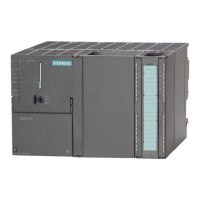Basics of Path Interpolation
2.5 Path interpolation types
TO Path Interpolation
Function Manual, 11/2010
19
The following interpolation modes are available for the path object:
● Linear paths (Page 21)
– 2D in a main
plane
– 3D
● Circ
ular paths (Page 22)
– 2D in a main
plane with radius, end point, and orient
ation
– 2D in a main plane with center point and angle
– 2D with intermediate and end points
– 3D with intermediate and end points
● Polynomial paths (Page 26)
– 2D in a main
plane with explicit spe
cification of geometric derivatives in the start point
or with a geometrically continuous attachment
– 3D with explicit specification of geometric derivatives in the start point or with a
geometrically continuous attachment
– 2D with explicit specification of polynomial parameters
– 3D with explicit specification of polynomial parameters
The main plane (2D) or the 3D mode in which the path motion occurs can be specified with
the pathPlane parameter of the interpolation command.
The third path coordinate perpendicular to the main plane is not changed in a 2D path.
2.5.2 Structure of commands for path interpolation
The following path interpolation commands are available:
● Linear interpolation:
_movePathLinear()
● Circular interpolation:
_movePathCircular()
● Polynomial interpolation:
_movePathPolynomial()
These commands contain the following parameters:
● Specification of the object instance in
pathObjectType
● Specification of the path plane in
pathPlane
This parameter is used to set the path plane. The main plane (2D) or the 3D mode in
which the path motion should occur can be specified.
● Specification of the path mode in
pathMode
This parameter is used to set whether the value for the end point is specified as an
absolute value or whether it is to be evaluated relative to the start point.
● Specification of the end point in
x, y, z
● Specification of the blending mode in
blendingMode
● Specification of the merge behavior in
mergeMode

